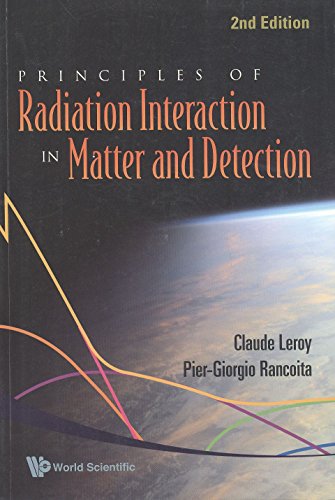Principles Of Radiation Interaction In Matter And Detection ebook
Par morin lester le mercredi, avril 27 2016, 01:36 - Lien permanent
Principles Of Radiation Interaction In Matter And Detection. Leroy C., Rancoita P. G.

Principles.Of.Radiation.Interaction.In.Matter.And.Detection.pdf
ISBN: 9812818278,9789812818270 | 951 pages | 24 Mb

Principles Of Radiation Interaction In Matter And Detection Leroy C., Rancoita P. G.
Publisher: WS
Although dark matter is thought to make up more than 80% of all matter in the universe, it does not interact with electromagnetic radiation and its existence has been inferred from its gravitational effects on visible matter. You cant see it, none of that particular universes light or any other radiation or forces can be used to detect its matter 'dark matter', but we know its thereits If quantum gravity is a property of space, all EM forces are also part of this reference system and we can control them by fluid dynamic principles. Much evidence has been accumulated to support the existence of dark matter, which, unlike normal matter, does not give off or absorb electromagnetic radiation. The new research suggests this view may be oversimplified, arguing that a substantial minority of dark matter might in fact interact strongly, and could be detected in cosmic-ray observations. The image shows emission from the center of the Milky Way, detected by PLANCK satellite. Written by: However, they can still be indirectly detected through their interaction with matter around their boundaries. Understanding atomic structure and the physical mechanisms of radiation interactions is the foundation on which much of the current practice of radiological health protection is based. Neutrinos have nearly no mass, no charge and interact negligibly with ordinary matter. How Big Are the Largest Black Holes and How Do Astronomers Detect Them? Baryonic matter can, in principle, be detected through the electromagnetic radiation it releases. But there's a problem: the amounts of baryonic matter detected via Much of this tenuous, filamentary gas remains undetected, but astronomers expect that it could most likely be found between interacting galaxy clusters, where the filaments are compressed and heated up, making them easier to spot. Instead of anti gravity, we can use but in case anyone in the future wonders WIMP stands for "weakly interacting MASSIVE particle". In recent years the Fermi Gamma-ray Space Telescope has detected a flux of gamma-rays from the centre of our galaxy and the Wilkinson Microwave Anisotropy Probe (WMAP) has revealed a "haze" that also seems to envelop the Milky Way's core. For example, gas and dust around a black hole emit X-rays as they spiral inwards. Dark matter particles are also usually very scattered and do not interact with each other. Atoms, Radiation, and Radiation Protection offers professionals and advanced students a comprehensive coverage of the major concepts that underlie the origins and transport of ionizing radiation in matter. Astronomers have observed stars in other galaxies orbiting particularly bright regions containing highly concentrated gas and emitting unusually large amounts of radiation. It is due to these properties that they cannot be easily detected. Principles Of Radiation Interaction In Matter And Detection. The Planck Satellite has observed a very unique emission of radio radiation from the center of the Milky Way, moving scientists closer than ever to a solution to the origin of dark matter.
Practice Tests for the KET: Student's Book download